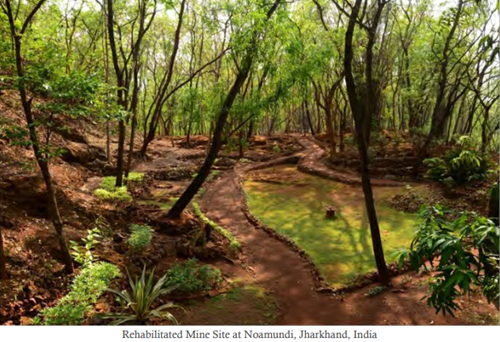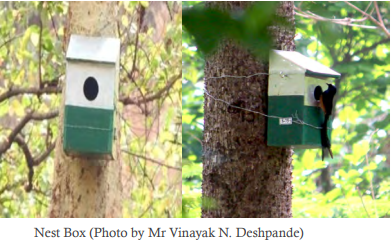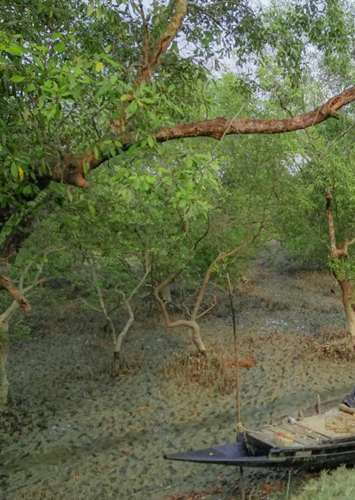"Forest Regeneration & Niche Nesting at OMQ" has been published in IUCN CEM's journal "Harnessing Nature"
Forest Regeneration & Niche Nesting for Bird Conservation at Tata Steel
By Hishmi Jamil Husain
Tata Steel is pursuing a collaborative approach to biodiversity by engaging the employees and local communities through various awareness programmes and workshops. The Company’s future endeavours aimed at enhancing strategic partnerships with organizations and agencies to collaborate on biodiversity conservation projects. Apart from recognized by the CII-ITC, Tata Steel has also bagged several industry awards for its work in the areas of sustainability and biodiversity. This year, Tata Steel launched its new corporate brand campaign ‘We Also Make Tomorrow’ drawn from its work done in the areas of technology, innovation and sustainability. Tata Steel has a four-tiered approach, which consists of two phases:
The first phase is the development phase where Tata Steel sets the vision and strategic objectives, and the long-term strategies (LTS) to achieve them. Second is the deployment phase in which strategies are converted into action plans through the process of long-term planning (LTP) and annual business planning (ABP). For conservation of biodiversity, Tata Steel has consciously decided to invest in biodiversity conservation.
Tata Steel has been actively working with several organizations, to enhance its performance in biodiversity conservation and significantly reducing its impact on ecosystem and biodiversity. Being a business leader in By Hishmi Jamil Husain steel mining, making and manufacturing, the Company is going beyond regulatory regimes and setting high standards for itself on social and environmental matters.
Today, sustainability and particularly creating and maintaining excellence in biodiversity is an essential element of how Tata Steel runs its business. Tata Steel launched its Biodiversity Policy in 2016. The policy provides guidelines for including biodiversity in every strategic and operational decision making. The Company is aligning its actions with the National Biodiversity Targets set in 2014 (India level), Aichi Biodiversity Targets set in 2010 (Global level) and Sustainable Development Goals to integrate biodiversity into its business ecosystem and enable a better tomorrow for future generations.
Tata Steel Ltd. (TSL) as a responsible global organization is committed to sustainable development and to nurture conservation efforts across operations. TSL is acutely conscious of responsibility towards sustainability and building a tomorrow for generations to come. The commitment to safeguarding the environment and biodiversity embedded in the Company’s corporate objectives, production processes and the way TSL conduct business.
TSL was the first Company in India to launch its Biodiversity Policy in 2016. The policy provides guidelines for including biodiversity in every strategic and operational decision making. The Company is aligning its actions with the MARCH 2020 29 National Biodiversity Targets set in 2014 (India level), Aichi Biodiversity Targets set in 2010 (Global level) and Sustainable Development Goals to integrate biodiversity into its business ecosystem and enable a better tomorrow for future generations.
A baseline study was done, and the Biodiversity Management Plan prepared under the guidance of IUCN (International Union for Conservation of Nature) for mining sites.
Regenerated forests at Noamundi
Tata Steel’s Noamundi Iron Ore Mine is naturally endowed with a lower stripping ratio and the overburden produced has been utilized in reclamation/restoration of the mine. The restoration was scientifically engineered over many decades, while implementation of the afforestation plan was a joint exercise with local stakeholders. The Company has covered a 126-hectare area across which adopted for progressive reclamation. The afforestation has made the restored mined-out area habitat for local birds and animal species today. Local stakeholders use these regenerated forests as a source of livelihood, extracting traditional medicinal plants, minimizing the impact on other natural forests. Plantation of native species in dump helps reclaim the mine to its original position, which is in harmony with surrounding virgin forest. Developing local forest as part of a progressive reclamation plan helps in achieving the goals of the final mine closure plan.
Environmental amelioration and human well-being strategies, for reducing the rate of degradation, fragmentation and loss of all natural habitats, have been finalized, and actions will be in place by 2020.

Niche Nesting
Niche Nesting was taken as one of Project identified under Biodiversity Management Plan to improve Birds’ Biodiversity at Noamundi. Location of the nest and Its monitoring was done in Geographic Information System (GIS) Platform.
Niche is a space selected by any animal or plant species for feeding, resting sleeping, nesting, breeding, and growing plants. A niche creates a secure space for a species with less competition from other species and the freedom to grow.
With guidance from IUCN scientists , Noamundi has developed the nest boxes and placed it at the various locations in reclaimed areas of the mining site for providing an essential nesting area for the members of many species of birds.

Hishmi Jamil Husain, PhD, is Head, Biodiversity with Tata Steel Limited,
Jamshedpur, India and member of IUCN Commission on Ecosystem Management











